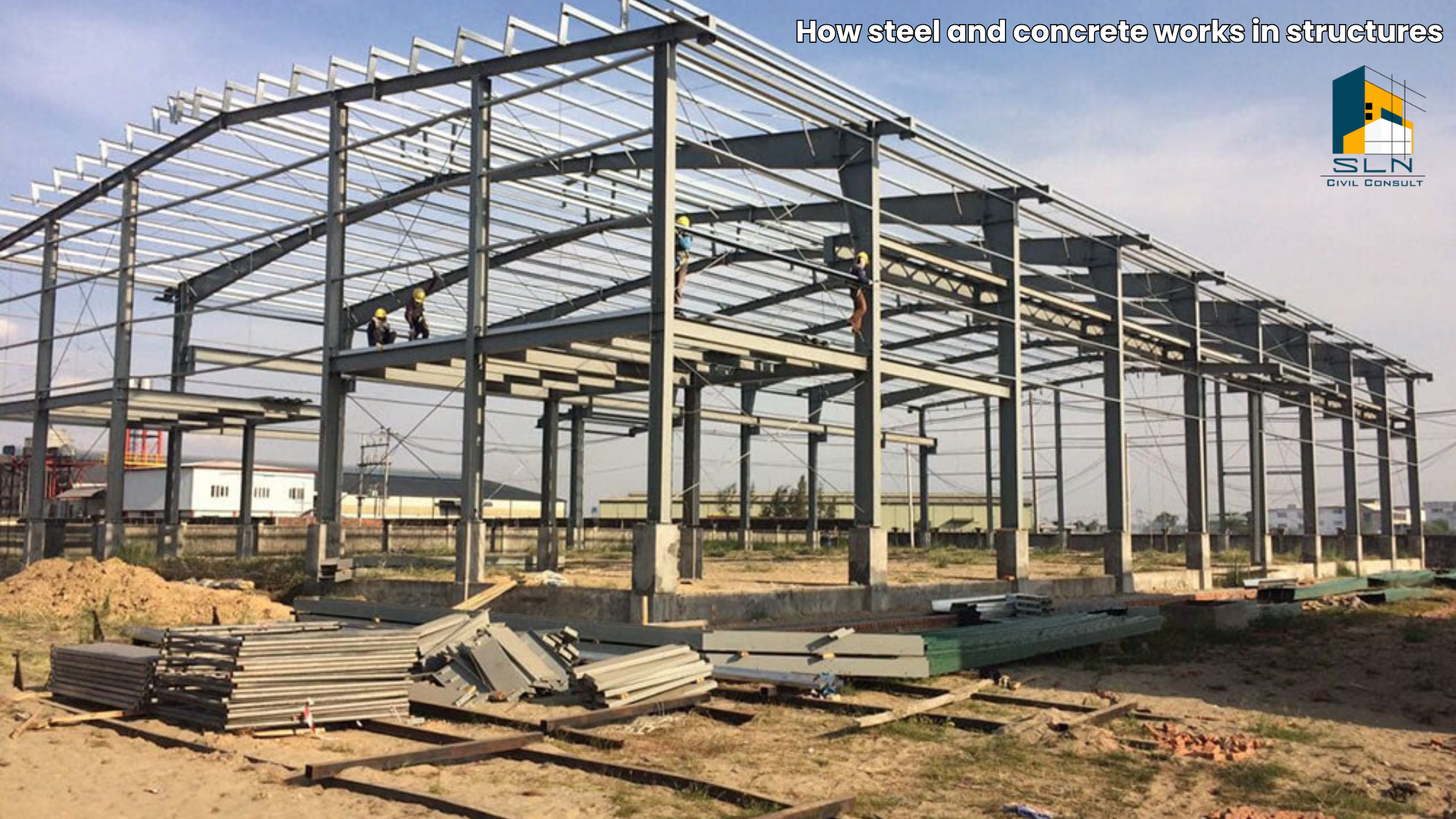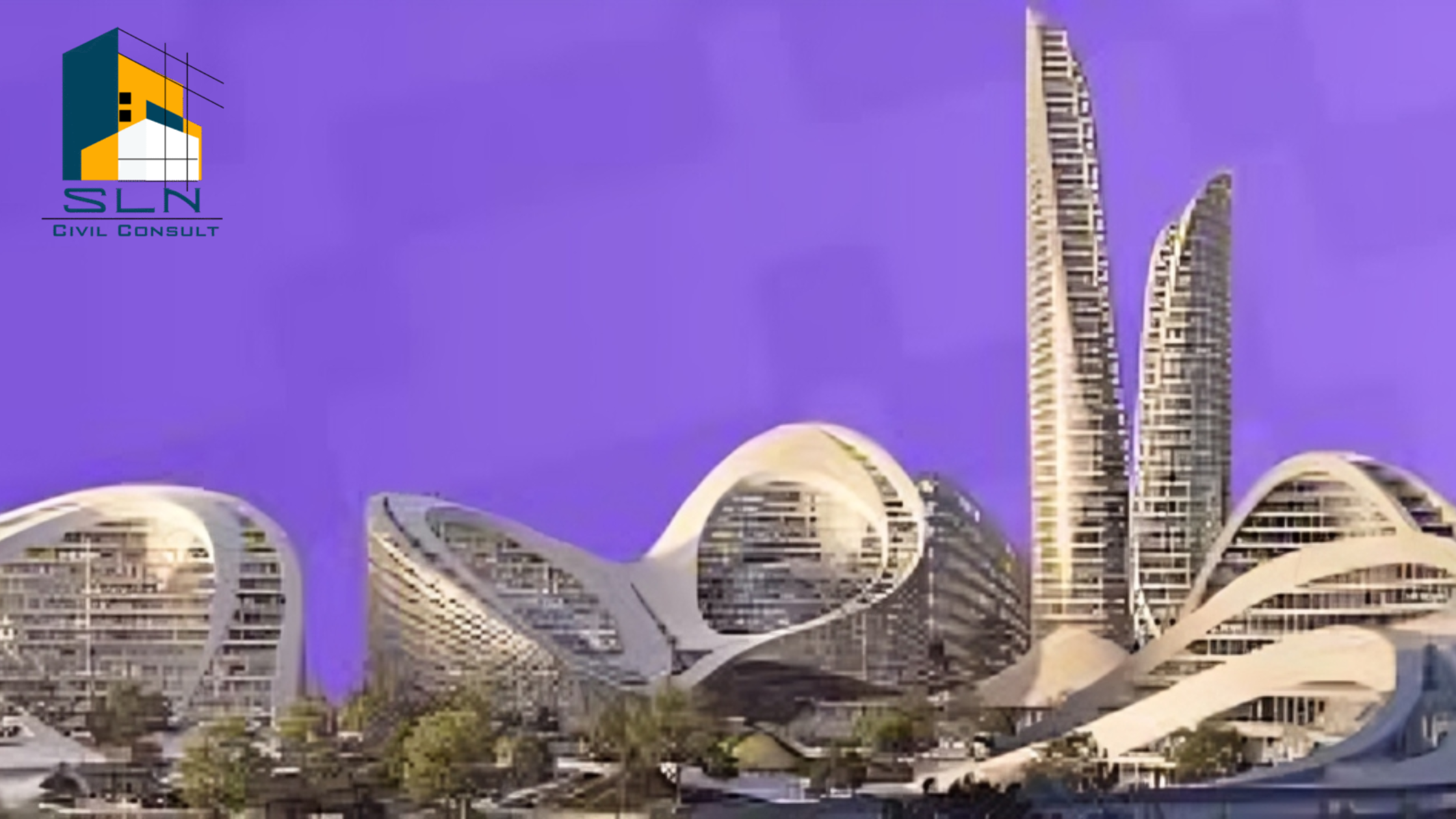When we talk about the strength and durability of any building — whether it’s a towering skyscraper, a residential villa, or a bridge — two materials dominate the conversation: steel bars and concrete. Together, they form the very backbone of modern structural engineering. But what makes this combination so powerful? Why do engineers across the world continue to rely on this age-old partnership?
Let’s dive deep into the science, engineering principles, and practical significance behind the use of steel bars and concrete for structural stability.
1. Understanding the Role of Concrete
Concrete is one of the most versatile and widely used construction materials in the world. It’s composed of cement, fine aggregates (sand), coarse aggregates (gravel or crushed stone), and water. When mixed together, these components undergo a chemical process called hydration, which hardens the mixture into a rock-like mass.
Key Advantages of Concrete:
– High Compressive Strength: Concrete can withstand very high loads pushing down on it, making it ideal for columns, foundations, and slabs.
– Moldable and Versatile: It can be cast into any shape before hardening, allowing for architectural freedom.
– Fire and Weather Resistant: Concrete structures resist fire, water, and environmental degradation better than most materials.
– Economical: Readily available raw materials make it cost-effective for large-scale projects.
However, concrete has a major limitation — it’s weak in tension (forces that pull or stretch it apart). This is where steel reinforcement becomes critical.
2. The Role of Steel Bars (Reinforcement)
Steel bars, also known as reinforcing bars or rebars, complement concrete’s weakness by providing tensile strength. When embedded within concrete, steel bars absorb tensile stresses that concrete cannot handle, ensuring the structure remains intact under various loads.
Why Steel is Ideal for Reinforcement:
– High Tensile Strength: Steel can stretch under load without breaking, balancing concrete’s compressive strength.
– Thermal Compatibility: Steel and concrete expand and contract at nearly the same rate under temperature changes, preventing internal cracking.
– Excellent Bonding: The ribbed or deformed surface of TMT (Thermo-Mechanically Treated) bars allows concrete to grip steel tightly, ensuring no slippage.
– Ductility: Steel can deform before failure, giving engineers time to detect structural distress before collapse — an essential safety feature.
This combination — steel for tension and concrete for compression — results in what engineers call Reinforced Cement Concrete (RCC), the foundation of modern construction.
3. The Science Behind Structural Stability
Structural stability is all about balance — the ability of a structure to withstand applied loads (like self-weight, occupants, wind, or earthquakes) without collapsing or deforming excessively.
How Steel and Concrete Work Together:
When a beam or slab bends under load:
– The upper part of the structure is compressed.
– The lower part is stretched (tensioned).
Concrete handles the compression, while the steel bars take on the tension. This perfect load-sharing mechanism allows RCC structures to perform efficiently and safely.
4. Types of Steel Bars Used in Construction
– Mild Steel Bars: Smooth surface, used in small projects but offers less bonding with concrete.
– Deformed Bars (TMT Bars): Ribbed surface for superior grip, strength, and corrosion resistance — the most commonly used type today.
– Stainless Steel Bars: Used in marine or highly corrosive environments.
– Welded Wire Mesh: Used for slabs and road pavements for even reinforcement distribution.
Among these, TMT bars are preferred for their strength, ductility, and earthquake-resistant properties.
5. The Role of Proper Reinforcement Design
Just using steel bars and concrete doesn’t guarantee stability — what truly matters is proper design and detailing.
Factors Affecting Reinforcement Design:
– Load Type: Dead loads, live loads, wind, or seismic forces.
– Spacing and Placement: Improper spacing can cause cracks or uneven stress distribution.
– Bar Diameter: Varies with the load-bearing capacity required.
– Concrete Cover: A protective layer of concrete shields the steel from corrosion and fire.
6. Durability and Longevity
When designed and maintained properly, steel-reinforced concrete structures can last for decades — even centuries. However, the durability depends on several factors:
– Quality of Materials: Poor-quality cement or steel can lead to early deterioration.
– Water-Cement Ratio: Too much water weakens concrete; optimal ratio ensures strength.
– Corrosion Protection: Using epoxy-coated or galvanized bars in coastal or humid areas prevents rusting.
– Maintenance: Periodic inspection and timely repair prevent minor cracks from becoming structural issues.
7. Steel and Concrete in Modern Construction
Today’s architectural marvels — from the Burj Khalifa to urban flyovers and residential apartments — all owe their strength to the concrete-steel combination.
Emerging Trends:
– High-Strength Concrete (HSC) and Ultra-High-Performance Concrete (UHPC) are now used for lighter and stronger structures.
– Recycled Steel and Eco-Friendly Concrete Mixes are promoting sustainability.
– Fiber Reinforced Concrete (FRC) combines steel fibers for even better crack control.
– Smart Concrete Sensors are being embedded to monitor stress, temperature, and load in real-time.
8. Why the Steel-Concrete Bond Defines Structural Success
The true measure of structural stability lies not just in material strength, but in how well materials complement each other. The steel-concrete relationship is a textbook example of engineering harmony — where one material’s weakness is compensated by the other’s strength.
Without steel, concrete would crack under tension.
Without concrete, steel would buckle under compression and corrode easily.
Together, they form a composite system that’s efficient, economical, and enduring.
9. Conclusion: The Perfect Partnership
Every stable structure you see — from bridges that span rivers to homes that stand strong for generations — tells the story of steel and concrete working hand in hand. This partnership represents the essence of civil engineering: combining nature’s raw materials with human ingenuity to create safe, lasting, and magnificent structures.
The future of construction will continue to evolve with smarter materials and technologies, but the timeless duo of steel bars and concrete will remain at the heart of structural stability for decades to come.



